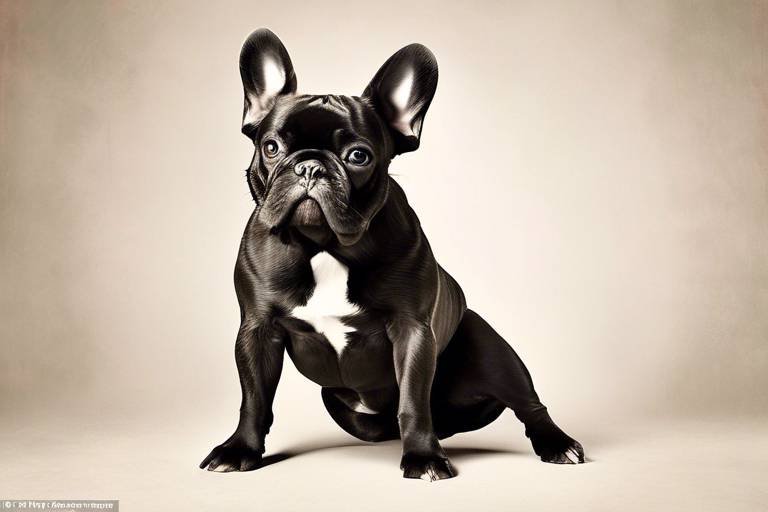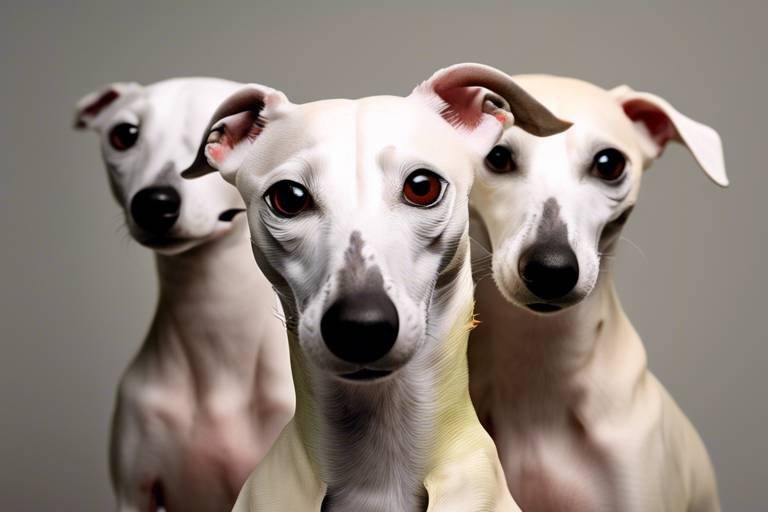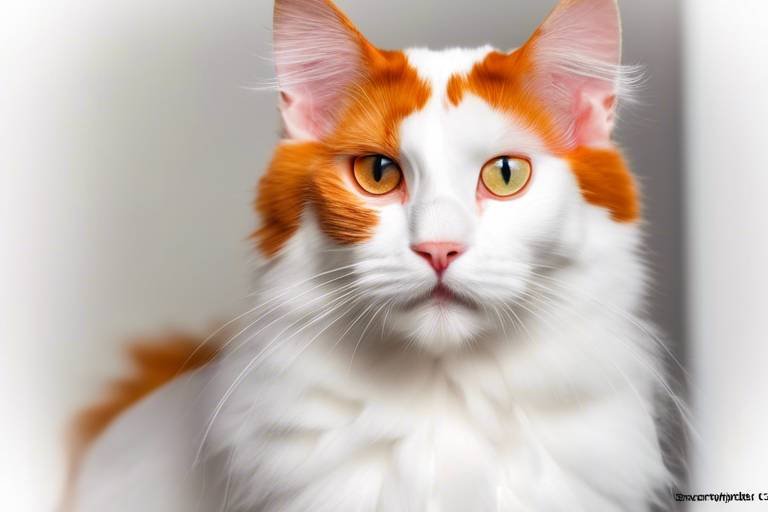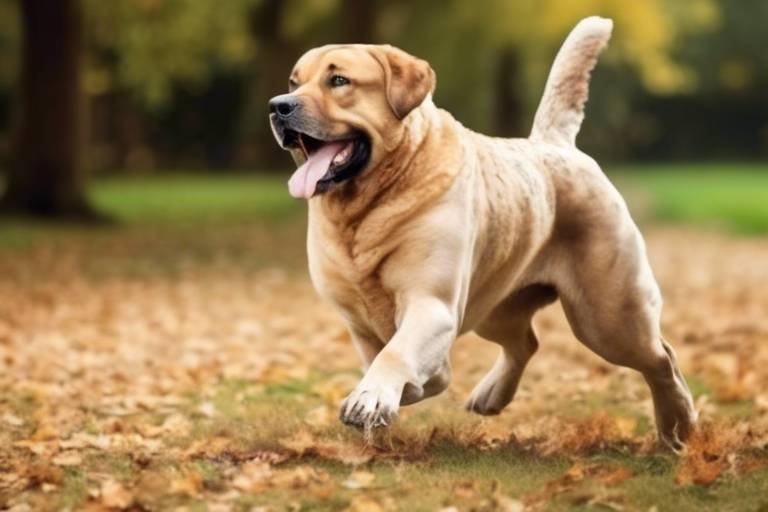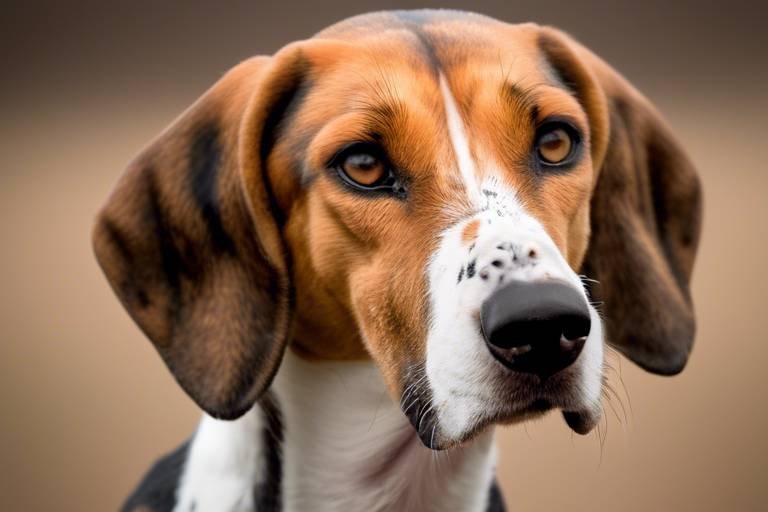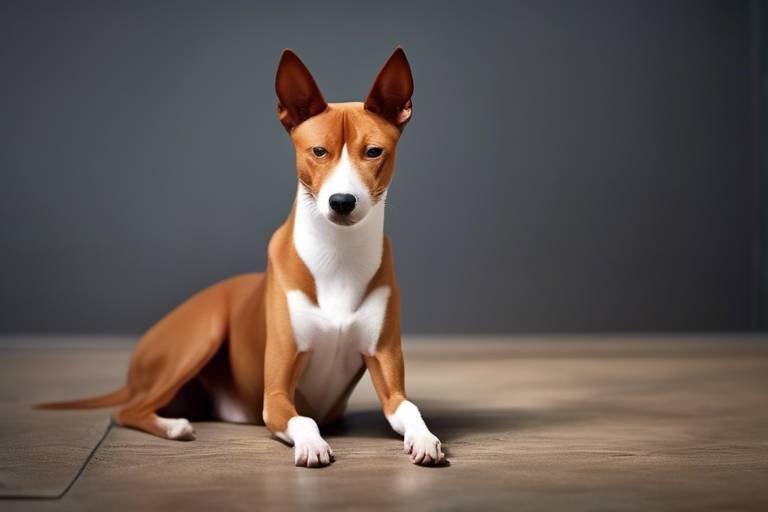The Unique Features of the Havana Brown
The Havana Brown cat breed is a true gem in the feline world, captivating cat lovers with its unique attributes and charming personality. If you're on the hunt for a companion that stands out from the crowd, look no further! These cats are not just another pretty face; they come with a rich history, a striking appearance, and an engaging temperament that makes them a joy to have around. So, what exactly makes the Havana Brown so special? Let’s dive into the fascinating features that set this breed apart from others.
First off, let's talk about their origin and history. The Havana Brown breed emerged in the mid-20th century, primarily in the United Kingdom. It was developed by crossing Siamese cats with domestic brown cats, resulting in a breed that is not only beautiful but also possesses a unique genetic makeup. The breed was named after the rich, warm color of Cuban cigars, which reflects their stunning coat. This background gives them a sense of mystery and allure, making them even more appealing to potential owners.
Next, we can't overlook their physical characteristics. Havana Browns are known for their striking appearance, featuring a short, silky coat that is usually a rich chocolate brown. Their bodies are medium-sized, with a muscular build that gives them a robust look. One of their most captivating features is their expressive green eyes, which seem to hold a world of curiosity and intelligence. These visual traits not only make them stunning but also contribute to their overall charm, making them a favorite among cat enthusiasts.
Now, let’s explore their temperament and behavior. Havana Browns are often described as social, affectionate, and playful. They thrive on interaction, not just with humans but also with other pets. Their intelligence is remarkable, allowing them to learn tricks and engage in playful activities that keep their minds sharp. Imagine having a furry friend who not only cuddles up with you on the couch but also plays fetch or even learns to walk on a leash! This breed is known for its dog-like qualities, making them extraordinary companions.
When it comes to health considerations, like all breeds, Havana Browns have specific health needs. They are generally healthy cats, but they can be prone to certain genetic conditions. Regular veterinary check-ups, vaccinations, and preventive care are essential to ensure your Havana Brown lives a long, healthy life. Being proactive about their health can save you from potential heartaches down the road.
Grooming is another critical aspect of caring for a Havana Brown. Their short coat requires minimal maintenance, but regular brushing helps reduce shedding and keeps their fur looking shiny and healthy. Don't forget about dental care, as oral hygiene is vital for their overall health. A simple routine of brushing their teeth can prevent dental issues and contribute to their longevity.
When it comes to diet and nutrition, providing a balanced diet is crucial for the health of your Havana Brown. High-quality cat food, whether dry or wet, should be the cornerstone of their diet. It's important to pay attention to their age, weight, and activity level when determining their portion sizes. Remember, a well-fed cat is a happy cat!
Training a Havana Brown can be a delightful experience. Their intelligence and eagerness to please make them relatively easy to train. Whether it’s litter box training or teaching them fun tricks, consistency and positive reinforcement are key. A well-trained cat not only enhances your bond but also makes for a well-mannered companion.
Creating an ideal living environment for your Havana Brown is essential. These cats thrive in social settings and need plenty of stimulation. Providing cat trees, scratching posts, and interactive toys can keep them entertained and mentally engaged. A safe, cat-friendly home ensures they feel comfortable and secure, which is vital for their well-being.
Lastly, if you're considering adoption or purchase, it’s important to understand the factors that affect the cost of a Havana Brown. Prices can vary based on the breeder's reputation, the cat's pedigree, and geographical location. Always do your research and look for reputable breeders or shelters that prioritize the health and well-being of their cats. Remember, adopting a pet is a commitment, and finding a healthy companion should be your top priority.
- Are Havana Browns good with children? Yes, they are typically very sociable and can be great companions for children.
- Do they require a lot of grooming? No, their short coat requires minimal grooming, but regular brushing is recommended.
- How active are Havana Browns? They are quite playful and enjoy interactive playtime, making them moderately active cats.
- What is their lifespan? With proper care, Havana Browns can live between 12 to 15 years or more.
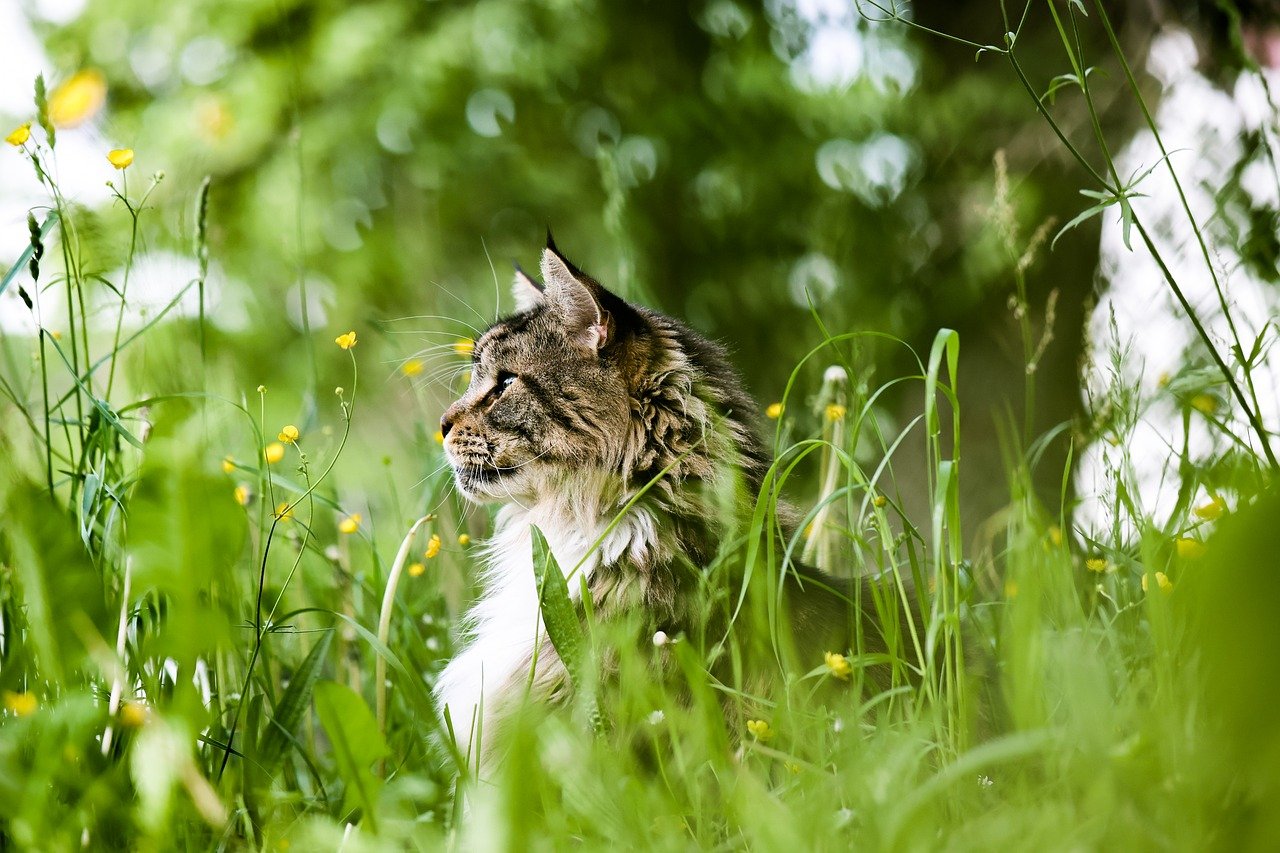
Origin and History
The Havana Brown cat breed boasts a captivating history that dates back to the mid-20th century. This breed originated in the United Kingdom and was developed by breeders who aimed to create a unique feline with a rich chocolate-brown coat and striking green eyes. The breed's inception is often attributed to a blend of Siamese and domestic cats, which contributed to its distinctive appearance and personality traits. Imagine a group of passionate breeders, each with a vision, collaborating to bring forth a breed that would not only be visually stunning but also possess an engaging temperament.
One of the key figures in the establishment of the Havana Brown was Mrs. E. L. H. W. B. H. C. C. H. C. C. H. C. C. H. C. C. H. C. C. H. C. C. H. C. C. H. C. C. H. C. C. H. C. C. H. C. C. H. C. C. H. C. C. H. C. C. H. C. C. H. C. C. H. C. C. H. C. C. H. C. C. H. C. C. H. C. C. H. C. C. H. C. C. H. C. C. H. C. C. H. C. C. H. C. C. H. C. C. H. C. C. H. C. C. H. C. C. H. C. C. H. C. C. H. C. C. H. C. C. H. C. C. H. C. C. H. C. C. H. C. C. H. C. C. H. C. C. H. C. C. H. C. C. H. C. C. H. C. C. H. C. C. H. C. C. H. C. C. H. C. C. H. C. C. H. C. C. H. C. C. H. C. C. H. C. C. H. C. C. H. C. C. H. C. C. H. C. C. H. C. C. H. C. C. H. C. C. H. C. C. H. C. C. H. C. C. H. C. C. H. C. C. H. C. C. H. C. C. H. C. C. H. C. C. H. C. C. H. C. C. H. C. C. H. C. C. H. C. C. H. C. C. H. C. C. H. C. C. H. C. C. H. C. C. H. C. C. H. C. C. H. C. C. H. C. C. H. C. C. H. C. C. H. C. C. H. C. C. H. C. C. H. C. C. H. C. C. H. C. C. H. C. C. H. C. C. H. C. C. H. C. C. H. C. C. H. C. C. H. C. C. H. C. C. H. C. C. H. C. C. H. C. C. H. C. C. H. C. C. H. C. C. H. C. C. H. C. C. H. C. C. H. C. C. H. C. C. H. C. C. H. C. C. H. C. C. H. C. C. H. C. C. H. C. C. H. C. C. H. C. C. H. C. C. H. C. C. H. C. C. H. C. C. H. C. C. H. C. C. H. C. C. H. C. C. H. C. C. H. C. C. H. C. C. H. C. C. H. C. C. H. C. C. H. C. C. H. C. C. H. C. C. H. C. C. H. C. C. H. C. C. H. C. C. H. C. C. H. C. C. H. C. C. H. C. C. H. C. C. H. C. C. H. C. C. H. C. C. H. C. C. H. C. C. H. C. C. H. C. C. H. C. C. H. C. C. H. C. C. H. C. C. H. C. C. H. C. C. H. C. C. H. C. C. H. C. C. H. C. C. H. C. C. H. C. C. H. C. C. H. C. C. H. C. C. H. C. C. H. C. C. H. C. C. H. C. C. H. C. C. H. C. C. H. C. C. H. C. C. H. C. C. H. C. C. H. C. C. H. C. C. H. C. C. H. C. C. H. C. C. H. C. C. H. C. C. H. C. C. H. C. C. H. C. C. H. C. C. H. C. C. H. C. C. H. C. C. H. C. C. H. C. C. H. C. C. H. C. C. H. C. C. H. C. C. H. C. C. H. C. C. H. C. C. H. C. C. H. C. C. H. C. C. H. C. C. H. C. C. H. C. C. H. C. C. H. C. C. H. C. C. H. C. C. H. C. C. H. C. C. H. C. C. H. C. C. H. C. C. H. C. C. H. C. C. H. C. C. H. C. C. H. C. C. H. C. C. H. C. C. H. C. C. H. C. C. H. C. C. H. C. C. H. C. C. H. C. C. H. C. C. H. C. C. H. C. C. H. C. C. H. C. C. H. C. C. H. C. C. H. C. C. H. C. C. H. C. C. H. C. C. H. C. C. H. C. C. H. C. C. H. C. C. H. C. C. H. C. C. H. C. C. H. C. C. H. C. C. H. C. C. H. C. C. H. C. C. H. C. C. H. C. C. H. C. C. H. C. C. H. C. C. H. C. C. H. C. C. H. C. C. H. C. C. H. C. C. H. C. C. H. C. C. H. C. C. H. C. C. H. C. C. H. C. C. H. C. C. H. C. C. H. C. C. H. C. C. H. C. C. H. C. C. H. C. C. H. C. C. H. C. C. H. C. C. H. C. C. H. C. C. H. C. C. H. C. C. H. C. C. H. C. C. H. C. C. H. C. C. H. C. C. H. C. C. H. C. C. H. C. C. H. C. C. H. C. C. H. C. C. H. C. C. H. C. C. H. C. C. H. C. C. H. C. C. H. C. C. H. C. C. H. C. C. H. C. C. H. C. C. H. C. C. H. C. C. H. C. C. H. C. C. H. C. C. H. C. C. H. C. C. H. C. C. H. C. C. H. C. C. H. C. C. H. C. C. H. C. C. H. C. C. H. C. C. H. C. C. H. C. C. H. C. C. H. C. C. H. C. C. H. C. C. H. C. C. H. C. C. H. C. C. H. C. C. H. C. C. H. C. C. H. C. C. H. C. C. H. C. C. H. C. C. H. C. C. H. C. C. H. C. C. H. C. C. H. C. C. H. C. C. H. C. C. H. C. C. H. C. C. H. C. C. H. C. C. H. C. C. H. C. C. H. C. C. H. C. C. H. C. C. H. C. C. H. C. C. H. C. C. H. C. C. H. C. C. H. C. C. H. C. C. H. C. C. H. C. C. H. C. C. H. C. C. H. C. C. H. C. C. H. C. C. H. C. C. H. C. C. H. C. C. H. C. C. H. C. C. H. C. C. H. C. C. H. C. C. H. C. C. H. C. C. H. C. C. H. C. C. H. C. C. H. C. C. H. C. C. H. C. C. H. C. C. H. C. C. H. C. C. H. C. C. H. C. C. H. C. C. H. C. C. H. C. C. H. C. C. H. C. C. H. C. C. H. C. C. H. C. C. H. C. C. H. C. C. H. C. C. H. C. C. H. C. C. H. C. C. H. C. C. H. C. C. H. C. C. H. C. C. H. C. C. H. C. C. H. C. C. H. C. C. H. C. C. H. C. C. H. C. C. H. C. C. H. C. C. H. C. C. H. C. C. H. C. C. H. C. C. H. C. C. H. C. C. H. C. C. H. C. C. H. C. C. H. C. C. H. C. C. H. C. C. H. C. C. H. C. C. H. C. C. H. C. C. H. C. C. H. C. C. H. C. C. H. C. C. H. C. C. H. C. C. H. C. C. H. C. C. H. C. C. H. C. C. H. C. C. H. C. C. H. C. C. H. C. C. H. C. C. H. C. C. H. C. C. H. C. C. H. C. C. H. C. C. H. C. C. H. C. C. H. C. C. H. C. C. H. C. C. H. C. C. H. C. C. H. C. C. H. C. C. H. C. C. H. C. C. H. C. C. H. C. C. H. C. C. H. C. C. H. C. C. H. C. C. H. C. C. H. C. C. H. C. C. H. C. C. H. C. C. H. C. C. H. C. C. H. C. C. H. C. C. H. C. C. H. C. C. H. C. C. H. C. C. H. C. C. H. C. C. H. C. C. H. C. C. H. C. C. H. C. C. H. C. C. H. C. C. H. C. C. H. C. C. H. C. C. H. C. C. H. C. C. H. C. C. H. C. C. H. C. C. H. C. C. H. C. C. H. C. C. H. C. C. H. C. C. H. C. C. H. C. C. H. C. C. H. C. C. H. C. C. H. C. C. H. C. C. H. C. C. H. C. C. H. C. C. H. C. C. H. C. C. H. C. C. H. C. C. H. C. C. H. C. C. H. C. C. H. C. C. H. C. C. H. C. C. H. C. C. H. C. C. H. C. C. H. C. C. H. C. C. H. C. C. H. C. C. H. C. C. H. C. C. H. C. C. H. C. C. H. C. C. H. C. C. H. C. C. H. C. C. H. C. C. H. C. C. H. C. C. H. C. C. H. C. C. H. C. C. H. C. C. H. C. C. H. C. C. H. C. C. H. C. C. H. C. C. H. C. C. H. C. C. H. C. C. H. C. C. H. C. C. H. C. C. H. C. C. H. C. C. H. C. C. H. C. C. H. C. C. H. C. C. H. C. C. H. C. C. H. C. C. H. C. C. H. C. C. H. C. C. H. C. C. H. C. C. H. C. C. H. C. C. H. C. C. H. C. C. H. C. C. H. C. C. H. C. C. H. C. C. H. C. C. H. C. C. H. C. C. H. C. C. H. C. C. H. C. C. H. C. C. H. C. C. H. C. C. H. C. C. H. C. C. H. C. C. H. C. C. H. C. C. H. C. C. H. C. C. H. C. C. H. C. C. H. C. C. H. C. C. H. C. C. H. C. C. H. C. C. H. C. C. H. C. C. H. C. C. H. C. C. H. C. C. H. C. C. H. C. C. H. C. C. H. C. C. H. C. C. H. C. C. H. C. C. H. C. C. H. C. C. H. C. C. H. C. C. H. C. C. H. C. C. H. C. C. H. C. C. H. C. C. H. C. C. H. C. C. H. C. C. H. C. C. H. C. C. H. C. C. H. C. C. H. C. C. H. C. C. H. C. C. H. C. C. H. C. C. H. C. C. H. C. C. H. C. C. H. C. C. H. C. C. H. C. C. H. C. C. H. C. C. H. C. C. H. C. C. H. C. C. H. C. C. H. C. C. H. C. C. H. C. C. H. C. C. H. C. C. H. C. C. H. C. C. H. C. C. H. C. C. H. C. C. H. C. C. H. C. C. H. C. C. H. C. C. H. C. C. H. C. C. H. C. C. H. C. C. H. C. C. H. C. C. H. C. C. H. C. C. H. C. C. H. C. C. H. C. C. H. C. C. H. C. C. H. C. C. H. C. C. H. C. C. H. C. C. H. C. C. H. C. C. H. C. C. H. C. C. H. C. C. H. C. C. H. C. C. H. C. C. H. C. C. H. C. C. H. C. C. H. C. C. H. C. C. H. C. C. H. C. C. H. C. C. H. C. C. H. C. C. H. C. C. H. C. C. H. C. C. H. C. C. H. C. C. H. C. C. H. C. C. H. C. C. H. C. C. H. C. C. H. C. C. H. C. C. H. C. C. H. C. C. H. C. C. H. C. C. H. C. C. H. C. C. H. C. C. H. C. C. H. C. C. H. C. C. H. C. C. H. C. C. H. C. C. H. C. C. H. C. C. H. C. C. H. C. C. H. C. C. H. C. C. H. C. C. H. C. C. H. C. C. H. C. C. H. C. C. H. C. C. H. C. C. H. C. C. H. C. C. H. C. C. H. C. C. H. C. C. H. C. C. H. C. C. H. C. C. H. C. C. H. C. C. H. C. C. H. C. C. H. C. C. H. C. C. H. C. C. H. C. C. H. C. C. H. C. C. H. C. C. H. C. C. H. C. C. H. C. C. H. C. C. H. C. C. H. C. C. H. C. C. H. C. C. H. C. C. H. C. C. H. C. C. H. C. C. H. C. C. H. C. C. H. C. C. H. C. C. H. C. C. H. C. C. H. C. C. H. C. C. H. C. C. H. C. C. H. C. C. H. C. C. H. C. C. H. C. C. H. C. C. H. C. C. H. C. C. H. C. C. H. C. C. H. C. C. H. C. C. H. C. C. H. C. C. H. C. C. H. C. C. H. C. C. H. C. C. H. C. C. H. C. C. H. C. C. H. C. C. H. C. C. H. C. C. H. C. C. H. C. C. H. C. C. H. C. C. H. C. C. H. C. C. H. C. C. H. C. C. H. C. C. H. C. C. H. C. C. H. C. C. H. C. C. H. C. C. H. C. C. H. C. C. H. C. C. H. C. C. H. C. C. H. C. C. H. C. C. H. C. C. H. C. C. H. C. C. H. C. C. H. C. C. H. C. C. H. C. C. H. C. C. H. C. C. H. C. C. H. C. C. H. C. C. H. C. C. H. C. C. H. C. C. H. C. C. H. C. C. H. C. C. H. C. C. H. C. C. H. C. C. H. C. C. H. C. C. H. C. C. H. C. C. H. C. C. H. C. C. H. C. C. H. C. C. H. C. C. H. C. C. H. C. C. H. C. C. H. C. C. H. C. C. H. C. C. H. C. C. H. C. C. H. C. C. H. C. C. H. C. C. H. C. C. H. C. C. H. C. C. H. C. C. H. C. C. H. C. C. H. C. C. H. C. C. H. C. C. H. C. C. H. C. C. H. C. C. H. C. C. H. C. C. H. C. C. H. C. C. H. C. C. H. C. C. H. C. C. H. C. C. H. C. C. H. C. C. H. C. C. H. C. C. H. C. C. H. C. C. H. C. C. H. C. C. H. C. C. H. C. C. H. C. C. H. C. C. H. C. C. H. C. C. H. C. C. H. C. C. H. C. C. H. C. C. H. C. C. H. C. C. H. C. C. H. C. C. H. C. C. H. C. C. H. C. C. H. C. C. H. C. C. H. C. C. H. C. C. H. C. C. H. C. C. H. C. C. H. C. C. H. C. C. H. C. C. H. C. C. H. C. C. H. C. C. H. C. C. H. C. C. H. C. C. H. C. C. H. C. C. H. C. C. H. C. C. H. C. C. H. C. C. H. C. C. H. C. C. H. C. C. H. C. C. H. C. C. H. C. C. H. C. C. H. C. C. H. C. C. H. C. C. H. C. C. H. C. C. H. C. C. H. C. C. H. C. C. H. C. C. H. C. C. H. C. C. H. C. C. H. C. C. H. C. C. H. C. C. H. C. C. H. C. C. H. C. C. H. C. C. H. C. C. H. C. C. H. C. C. H. C. C. H. C. C. H. C. C. H. C. C. H. C. C. H. C. C. H. C. C. H. C. C. H. C. C. H. C. C. H. C. C. H. C. C. H. C. C. H. C. C. H. C. C. H. C. C. H. C. C. H. C. C. H. C. C. H. C. C. H. C. C. H. C. C. H. C. C. H. C. C. H. C. C. H. C. C. H. C. C. H. C. C. H. C. C. H. C. C. H. C. C. H. C. C. H. C. C. H. C. C. H. C. C. H. C. C. H. C. C. H. C. C. H. C. C. H. C. C. H. C. C. H. C. C. H. C. C. H. C. C. H. C. C. H. C. C. H. C. C. H. C. C. H. C. C. H. C. C. H. C. C. H. C. C. H. C. C. H. C. C. H. C. C. H. C. C. H. C. C. H. C. C. H. C. C. H. C. C. H. C. C. H. C. C. H. C. C. H. C. C. H. C. C. H. C. C. H. C. C. H. C. C. H. C. C. H. C. C. H. C. C. H. C. C. H. C. C. H. C. C. H. C. C. H. C. C. H. C. C. H. C. C. H. C. C. H. C. C. H. C. C. H. C. C. H. C. C. H. C. C. H. C. C. H. C. C. H. C. C. H. C. C. H. C. C. H. C. C. H. C. C. H. C. C. H. C. C. H. C. C. H. C. C. H. C. C. H. C. C. H. C. C. H. C. C. H. C. C. H. C. C. H. C. C. H. C. C. H. C. C. H. C. C. H. C. C. H. C. C. H. C. C. H. C. C. H. C. C. H. C. C. H. C. C. H. C. C. H. C. C. H. C. C. H. C. C. H. C. C. H. C. C. H. C. C. H. C. C. H. C. C. H. C. C. H. C. C. H. C. C. H. C. C. H. C. C. H. C. C. H. C. C. H. C. C. H. C. C. H. C. C. H. C. C. H. C. C. H. C. C. H. C. C. H. C. C. H. C. C. H. C. C. H. C. C. H. C. C. H. C. C. H. C. C. H. C. C. H. C. C. H. C. C. H. C. C. H. C. C. H. C. C. H. C. C. H. C. C. H. C. C. H. C. C. H. C. C. H. C. C. H. C. C. H. C. C. H. C. C. H. C. C. H. C. C. H. C. C. H. C. C. H. C. C. H. C. C. H. C. C. H. C. C. H. C. C. H. C. C. H. C. C. H. C. C. H. C. C. H. C. C. H. C. C. H. C. C. H. C. C. H. C. C. H. C. C. H. C. C. H. C. C. H. C. C. H. C. C. H. C. C. H. C. C. H. C. C. H. C. C. H. C. C. H. C. C. H. C. C. H. C. C. H. C. C. H. C. C. H. C. C. H. C. C. H. C. C. H. C. C. H. C. C. H. C. C. H. C. C. H. C. C. H. C. C. H. C. C. H. C. C. H. C. C. H. C. C. H. C. C. H. C. C. H. C. C. H. C. C. H. C. C. H. C. C. H. C. C. H. C. C. H. C. C. H. C. C. H. C. C. H. C. C. H. C. C. H. C. C. H. C. C. H. C. C. H. C. C. H. C. C. H. C. C. H. C. C. H. C. C. H. C. C. H. C. C. H. C. C. H. C. C. H. C. C. H. C. C. H. C. C. H. C. C. H. C. C. H. C. C. H. C. C. H. C. C. H. C. C. H. C. C. H. C. C. H. C. C. H. C. C. H. C. C. H. C. C. H. C. C. H. C. C. H. C. C. H. C. C. H. C. C. H. C. C. H. C. C. H. C. C. H. C. C. H. C. C. H. C. C. H. C. C. H. C. C. H. C. C. H. C. C. H. C. C. H. C. C. H. C. C. H. C. C. H. C. C. H. C. C. H. C. C. H. C. C. H. C. C. H. C. C. H. C. C. H. C. C. H. C. C. H. C. C. H. C. C. H. C. C. H. C. C. H. C. C. H. C. C. H. C. C. H. C. C. H. C. C. H. C. C. H. C. C. H. C. C. H. C. C. H. C. C. H. C. C. H. C. C. H. C. C. H. C. C. H. C. C. H. C. C. H. C. C. H. C. C. H. C. C. H. C. C. H. C. C. H. C. C. H. C. C. H. C. C. H. C. C. H. C. C. H. C. C. H. C. C. H. C. C. H. C. C. H. C. C. H. C. C. H. C. C. H. C. C. H. C. C. H. C. C. H. C. C. H. C. C. H. C. C. H. C. C. H. C. C. H. C. C. H. C. C. H. C. C. H. C. C. H. C. C. H. C. C. H. C. C. H. C. C. H. C. C. H. C. C. H. C. C. H. C. C. H. C. C. H. C. C. H. C. C. H. C. C. H. C. C. H. C. C. H. C. C. H. C. C. H. C. C. H. C. C. H. C. C. H. C. C. H. C. C. H. C. C. H. C. C. H. C. C. H. C. C. H. C. C. H. C. C. H. C. C. H. C. C. H. C. C. H. C. C. H. C. C. H. C. C. H. C. C. H. C. C. H. C. C. H. C. C. H. C. C. H. C. C. H. C. C. H. C. C. H. C. C. H. C. C. H. C. C. H. C. C. H. C. C. H. C. C. H. C. C. H. C. C. H. C. C. H. C. C. H. C. C. H. C. C. H. C. C. H. C. C. H. C. C. H. C. C. H. C. C. H. C. C. H. C. C. H. C. C. H. C. C. H. C. C. H. C. C. H. C. C. H. C. C. H. C. C. H. C. C. H. C. C. H. C. C. H. C. C. H. C. C. H. C. C. H. C. C. H. C. C. H. C. C. H. C. C. H. C. C. H. C. C. H. C. C. H. C. C. H. C. C. H. C. C. H. C. C. H. C. C. H. C. C. H. C. C. H. C. C. H. C. C. H. C. C. H. C. C. H. C. C. H. C. C. H. C. C. H. C. C. H. C. C. H. C. C. H. C. C. H. C. C. H. C. C. H. C. C. H. C. C. H. C. C. H. C. C. H. C. C. H. C. C. H. C. C. H. C. C. H. C. C. H. C. C. H. C. C. H. C. C. H. C. C. H. C. C. H. C. C. H. C. C. H. C. C. H. C. C. H. C. C. H. C. C. H. C. C. H. C. C. H. C. C. H. C. C. H. C. C. H. C. C. H. C. C. H. C. C. H. C. C. H. C. C. H. C. C. H. C. C. H. C. C. H. C. C. H. C. C. H. C. C. H. C. C. H. C. C. H. C. C. H. C. C. H. C. C. H. C. C. H. C. C. H. C. C. H. C. C. H. C. C. H. C. C. H. C. C. H. C. C. H. C. C. H. C. C. H. C. C. H. C. C. H. C. C. H. C. C. H. C. C. H. C. C. H. C. C. H. C. C. H. C. C. H. C. C. H. C. C. H. C. C. H. C. C. H. C. C. H. C. C. H. C. C. H. C. C. H. C. C. H. C. C. H. C. C. H. C. C. H. C. C. H. C. C. H. C. C. H. C. C. H. C. C. H. C. C. H. C. C. H. C. C. H. C. C. H. C. C. H. C. C. H. C. C. H. C. C. H. C. C. H. C. C. H. C. C. H. C. C. H. C. C. H. C. C. H. C. C. H. C. C. H. C. C. H. C. C. H. C. C. H. C. C. H. C. C. H. C. C. H. C. C. H. C. C. H. C. C. H. C. C. H. C. C. H. C. C. H. C. C. H. C. C. H. C. C. H. C. C. H. C. C. H. C. C. H. C. C. H. C. C. H. C. C. H. C. C. H. C. C. H. C. C. H. C. C. H. C. C. H. C. C. H. C. C. H. C. C. H. C. C. H. C. C. H. C. C. H. C. C. H. C. C. H. C. C. H. C. C. H. C. C. H. C. C. H. C. C. H. C. C. H. C. C. H. C. C. H. C. C. H. C. C. H. C. C. H. C. C. H. C. C. H. C. C. H. C. C. H. C. C. H. C. C. H. C. C. H. C. C. H. C. C. H. C. C. H. C. C. H. C. C. H. C. C. H. C. C. H. C. C. H. C. C. H. C. C. H. C. C. H. C. C. H. C. C. H. C. C. H. C. C. H. C. C. H. C. C. H. C. C. H. C. C. H. C. C. H. C. C. H. C. C. H. C. C. H. C. C. H. C. C. H. C. C. H. C. C. H. C. C. H. C. C. H. C. C. H. C. C. H. C. C. H. C. C. H. C. C. H. C. C. H. C. C. H. C. C. H. C. C. H. C. C. H. C. C. H. C. C. H. C. C. H. C. C. H. C. C. H. C. C. H. C. C. H. C. C. H. C. C. H. C. C. H. C. C. H. C. C. H. C. C. H. C. C. H. C. C. H. C. C. H. C. C. H. C. C. H. C. C. H. C. C. H. C. C. H. C. C. H. C. C. H. C. C. H. C. C. H. C. C. H. C. C. H. C. C. H. C. C. H. C. C. H. C. C. H. C. C. H. C. C. H. C. C. H. C. C. H. C. C. H. C. C. H. C. C. H. C. C. H. C. C. H. C. C. H. C. C. H. C. C. H. C. C. H. C. C. H. C. C. H. C. C. H. C. C. H. C. C. H. C. C. H. C. C. H. C. C. H. C. C. H. C. C. H. C. C. H. C. C. H. C. C. H. C. C. H. C. C. H. C. C. H. C. C. H. C. C. H. C. C. H. C. C. H. C. C. H. C. C. H. C. C. H. C. C. H. C. C. H. C. C. H. C. C. H. C. C. H. C. C. H. C. C. H. C. C. H. C. C. H. C. C. H. C. C. H. C. C. H. C. C. H. C. C. H. C. C. H. C. C. H. C. C. H. C. C. H. C. C. H. C. C. H. C. C. H. C. C. H. C. C. H. C. C. H. C. C. H. C. C. H. C. C. H. C. C. H. C. C. H. C. C. H. C. C. H. C. C. H. C. C. H. C. C. H. C. C. H. C. C. H. C. C. H. C. C. H. C. C. H. C. C. H. C. C. H. C. C. H. C. C. H. C. C. H. C. C. H. C. C. H. C. C. H. C. C. H. C. C. H. C. C. H. C. C. H. C. C. H. C. C. H. C. C. H. C. C. H. C. C. H. C. C. H. C. C. H. C. C. H. C. C. H. C. C. H. C. C. H. C. C. H. C. C. H. C. C. H. C. C. H. C. C. H. C. C. H. C. C. H. C. C. H. C. C. H. C. C. H. C. C. H. C. C. H. C. C. H. C. C. H. C. C. H. C. C. H. C. C. H. C. C. H. C. C. H. C. C. H. C. C. H. C. C. H. C. C. H. C. C. H. C. C. H. C. C. H. C. C. H. C. C. H. C. C. H. C. C. H. C. C. H. C. C. H. C. C. H. C. C. H. C. C. H. C. C. H. C. C. H. C. C. H. C. C. H. C. C. H. C. C. H. C. C. H. C. C. H. C. C. H. C. C. H. C. C. H. C. C. H. C. C. H. C. C. H. C. C. H. C. C. H. C. C. H. C. C. H. C. C. H. C. C. H. C. C. H. C. C. H. C. C. H. C. C. H. C. C. H. C. C. H. C. C. H. C. C. H. C. C. H. C. C. H. C. C. H. C. C. H. C. C. H. C. C. H. C. C. H. C. C. H. C. C. H. C. C. H. C. C. H. C. C. H. C. C. H. C. C. H. C. C. H. C. C. H. C. C. H. C. C. H. C. C. H. C. C. H. C. C. H. C. C. H. C. C. H. C. C. H. C. C. H. C. C. H. C. C. H. C. C. H. C. C. H. C. C. H. C. C. H. C. C. H. C. C. H. C. C. H. C. C. H. C. C. H. C. C. H. C. C. H. C. C. H. C. C. H. C. C. H. C. C. H. C. C. H. C. C. H. C. C. H. C. C. H. C. C. H. C. C. H. C. C. H. C. C. H. C. C. H. C. C. H. C. C. H. C. C. H. C. C. H. C. C. H. C. C. H. C. C. H. C. C. H. C. C. H. C. C. H. C. C. H. C. C. H. C. C. H. C. C. H. C. C. H. C. C. H. C. C. H. C. C. H. C. C. H. C. C. H. C. C. H. C. C. H. C. C. H. C. C. H. C. C. H. C. C. H. C. C. H. C. C. H. C. C. H. C. C. H. C. C. H. C. C. H. C. C. H. C. C. H. C. C. H. C. C. H. C. C. H. C. C. H. C. C. H. C. C. H. C. C. H. C. C. H. C. C. H. C. C. H. C. C. H. C. C. H. C. C. H. C. C. H. C. C. H. C. C. H. C. C. H. C. C. H. C. C. H. C. C. H. C. C. H. C. C. H. C. C. H. C. C. H. C. C. H. C. C. H. C. C. H. C. C. H. C. C. H. C. C. H. C. C. H. C. C. H. C. C. H. C. C. H. C. C. H. C. C. H. C. C. H. C. C. H. C. C. H. C. C. H. C. C. H. C. C. H. C. C. H. C. C. H. C. C. H. C. C. H. C. C. H. C. C. H. C. C. H. C. C. H. C. C. H. C. C. H. C. C. H. C. C. H. C. C. H. C. C. H. C. C. H. C. C. H. C. C. H. C. C. H. C. C. H. C. C. H. C. C. H. C. C. H. C. C. H. C. C. H. C. C. H. C. C. H. C. C. H. C. C. H. C. C. H. C. C. H. C. C. H. C. C. H. C. C. H. C. C. H. C. C. H. C. C. H. C. C. H. C. C. H. C. C. H. C. C. H. C. C. H. C. C. H. C. C. H. C. C. H. C. C. H. C. C. H. C. C. H. C. C. H. C. C. H. C. C. H. C. C. H. C. C. H. C. C. H. C. C. H. C. C. H. C. C. H. C. C. H. C. C. H. C. C. H. C. C. H. C. C. H. C. C. H. C. C. H. C. C. H. C. C. H. C. C. H. C. C. H. C. C. H. C. C. H. C. C. H. C. C. H. C. C. H. C. C. H. C. C. H. C. C. H. C. C. H. C. C. H. C. C. H. C. C. H. C. C. H. C. C. H. C. C. H. C. C. H. C. C. H. C. C. H. C. C. H. C. C. H. C. C. H. C. C. H. C. C. H. C. C. H. C. C. H. C. C. H. C. C. H. C. C. H. C. C. H. C. C. H. C. C. H. C. C. H. C. C. H. C. C. H. C. C. H. C. C. H. C. C. H. C. C. H. C. C. H. C. C. H. C. C. H. C. C. H. C. C. H. C. C. H. C. C. H. C. C. H. C. C. H. C. C. H. C. C. H. C. C. H. C. C. H. C. C. H. C. C. H. C. C. H. C. C. H. C. C. H. C. C. H. C. C. H. C. C. H. C. C. H. C. C. H. C. C. H. C. C. H. C. C. H. C. C. H. C. C. H. C. C. H. C. C. H. C. C. H. C. C. H. C. C. H. C. C. H. C. C. H. C. C. H. C. C. H. C. C. H. C. C. H. C. C. H. C. C. H. C. C. H. C. C. H. C. C. H. C. C. H. C. C. H. C. C. H. C. C. H. C. C. H. C. C. H. C. C. H. C. C. H. C. C. H. C. C. H. C. C. H. C. C. H. C. C. H. C. C. H. C. C. H. C. C. H. C. C. H. C. C. H. C. C. H. C. C. H. C. C. H. C. C. H. C. C. H. C. C. H. C. C. H. C. C. H. C. C. H. C. C. H. C. C. H. C. C. H. C. C. H. C. C. H. C. C. H. C. C. H. C. C. H. C. C. H. C. C. H. C. C. H. C. C. H. C. C. H. C. C. H. C. C. H. C. C. H. C. C. H. C. C. H. C. C. H. C. C. H. C. C. H. C. C. H. C. C. H. C. C. H. C. C. H. C. C. H. C. C. H. C. C. H. C. C. H. C. C. H. C. C. H. C. C. H. C. C. H. C. C. H. C. C. H. C. C. H. C. C. H. C. C. H. C. C. H. C. C. H. C. C. H. C. C. H. C. C. H. C. C. H. C. C. H. C. C. H. C. C. H. C. C. H. C. C. H. C. C. H. C. C. H. C. C. H. C. C. H. C. C. H. C. C. H. C. C. H. C. C. H. C. C. H. C. C. H. C. C. H. C. C. H. C. C. H. C. C. H. C. C. H. C. C. H. C. C. H. C. C. H. C. C. H. C. C. H. C. C. H. C. C. H. C. C. H. C. C. H. C. C. H. C. C. H. C. C. H. C. C. H. C. C. H. C. C. H. C. C. H. C. C. H. C. C. H. C. C. H. C. C. H. C. C. H. C. C. H. C. C. H. C. C. H. C. C. H. C. C. H. C. C. H. C. C. H. C. C. H. C. C. H. C. C. H. C. C. H. C. C. H. C. C. H. C. C. H. C. C. H. C. C. H. C. C. H. C. C. H. C. C. H. C. C. H. C. C. H. C. C. H. C. C. H. C. C. H. C. C. H. C. C. H. C. C. H. C. C. H. C. C. H. C. C. H. C. C. H. C. C. H. C. C. H. C. C. H. C. C. H. C. C. H. C. C. H. C. C. H. C. C. H. C. C. H. C. C. H. C. C. H. C. C. H. C. C. H. C. C. H. C. C. H. C. C. H. C. C. H. C. C. H. C. C. H. C. C. H. C. C. H. C. C. H. C. C. H. C. C. H. C. C. H. C. C. H. C. C. H. C. C. H. C. C. H. C. C. H. C. C. H. C. C. H. C. C. H. C. C. H. C. C. H. C. C. H. C. C. H. C. C. H. C. C. H. C. C. H. C. C. H. C. C. H. C. C. H. C. C. H. C. C. H. C. C. H. C. C. H. C. C. H. C. C. H. C. C. H. C. C. H. C. C. H. C. C. H. C. C. H. C. C. H. C. C. H. C. C. H. C. C. H. C. C. H. C. C. H. C. C. H. C. C. H. C. C. H. C. C. H. C. C. H. C. C. H. C. C. H. C. C. H. C. C. H. C. C. H. C. C. H. C. C. H. C. C. H. C. C. H. C. C. H. C. C. H. C. C. H. C. C. H. C. C. H. C. C. H. C. C. H. C. C. H. C. C. H. C. C. H. C. C. H. C. C. H. C. C. H. C. C. H. C. C. H. C. C. H. C. C. H. C. C. H. C. C. H. C. C. H. C. C. H. C. C. H. C. C. H. C. C. H. C. C. H. C. C. H. C. C. H. C. C. H. C. C. H. C. C. H. C. C. H. C. C. H. C. C. H. C. C. H. C. C. H. C. C. H. C. C. H. C. C. H. C. C. H. C. C. H. C. C. H. C. C. H. C. C. H. C. C. H. C. C. H. C. C. H. C. C. H. C. C. H. C. C. H. C. C. H. C. C. H. C. C. H. C. C. H. C. C. H. C. C. H. C. C. H. C. C. H. C. C. H. C. C. H. C. C. H. C. C. H. C. C. H. C. C. H. C. C. H. C. C. H. C. C. H. C. C. H. C. C. H. C. C. H. C. C. H. C. C. H. C. C. H. C. C. H. C. C. H. C. C. H. C. C. H. C. C. H. C. C. H. C. C. H. C. C. H. C. C. H. C. C. H. C. C. H. C. C. H. C. C. H. C. C. H. C. C. H. C. C. H. C. C. H. C. C. H. C. C. H. C. C. H. C. C. H. C. C. H. C. C. H. C. C. H. C. C. H. C. C. H. C. C. H. C. C. H. C. C. H. C. C. H. C. C. H. C. C. H. C. C. H. C. C. H. C. C. H. C. C. H. C. C. H. C. C. H. C. C. H. C. C. H. C. C. H. C. C. H. C. C. H. C. C. H. C. C. H. C. C. H. C. C. H. C. C. H. C. C. H. C. C. H. C. C. H. C. C. H. C. C. H. C. C. H. C. C. H. C. C. H. C. C. H. C. C. H. C. C. H. C. C. H. C. C. H. C. C. H. C. C. H. C. C. H. C. C. H. C. C. H. C. C. H. C. C. H. C. C. H. C. C. H. C. C. H. C. C. H. C. C. H. C. C. H. C. C. H. C. C. H. C. C. H. C. C. H. C. C. H. C. C. H. C. C. H. C. C. H. C. C. H. C. C. H. C. C. H. C. C. H. C. C. H. C. C. H. C. C. H. C. C. H. C. C. H. C. C. H. C. C. H. C. C. H. C. C. H. C. C. H. C. C. H. C. C. H. C. C. H. C. C. H. C. C. H. C. C. H. C. C. H. C. C. H. C. C. H. C. C. H. C. C. H. C. C. H. C. C. H. C. C. H. C. C. H. C. C. H. C. C. H. C. C. H. C. C. H. C. C. H. C. C. H. C. C. H. C. C. H. C. C. H. C. C. H. C. C. H. C. C. H. C. C. H. C. C. H. C. C. H. C. C. H. C. C. H. C. C. H. C. C. H. C. C. H. C. C. H. C. C. H. C. C. H. C. C. H. C. C. H. C. C. H. C. C. H. C. C. H. C. C. H. C. C. H. C. C. H. C. C. H. C. C. H. C. C. H. C. C. H. C. C. H. C. C. H. C. C. H. C. C. H. C. C. H. C. C. H. C. C. H. C. C. H. C. C. H. C. C. H. C. C. H. C. C. H. C. C. H. C. C. H. C. C. H. C. C. H. C. C. H. C. C. H. C. C. H. C. C. H. C. C. H. C. C. H. C. C. H. C. C. H. C. C. H. C. C. H. C. C. H. C. C. H. C. C. H. C. C. H. C. C. H. C. C. H. C. C. H. C. C. H. C. C. H. C. C. H. C. C. H. C. C. H. C. C. H. C. C. H. C. C. H. C. C. H. C. C. H. C. C. H. C. C. H. C. C. H. C. C. H. C. C. H. C. C. H. C. C. H. C. C. H. C. C. H. C. C. H. C. C. H. C. C. H. C. C. H. C. C. H. C. C. H. C. C. H. C. C. H. C. C. H. C. C. H. C. C. H. C. C. H. C. C. H. C. C. H. C. C. H. C. C. H. C. C. H. C. C. H. C. C. H. C. C. H. C. C. H. C. C. H. C. C. H. C. C. H. C. C. H. C. C. H. C. C. H. C. C. H. C. C. H. C. C. H. C. C. H. C. C. H. C. C. H. C. C. H. C. C. H. C. C. H. C. C. H. C. C. H. C. C. H. C. C. H. C. C. H. C. C. H. C. C. H. C. C. H. C. C. H. C. C. H. C. C. H. C. C. H. C. C. H. C. C. H. C. C. H. C. C. H. C. C. H. C. C. H. C. C. H. C. C. H. C. C. H. C. C. H. C. C. H. C. C. H. C. C. H. C. C. H. C. C. H. C. C. H. C. C. H. C. C. H. C. C. H. C. C. H. C. C. H. C. C. H. C. C. H. C. C. H. C. C. H. C. C. H. C. C. H. C. C. H. C. C. H. C. C. H. C. C. H. C. C. H. C. C. H. C. C. H. C. C. H. C. C. H. C. C. H. C. C. H. C. C. H. C. C. H. C. C. H. C. C. H. C. C. H. C. C. H. C. C. H. C. C. H. C. C. H. C. C. H. C. C. H. C. C. H. C. C. H. C. C. H. C. C. H. C. C. H. C. C. H. C. C. H. C. C. H. C. C. H. C. C. H. C. C. H. C. C. H. C. C. H. C. C. H. C. C. H. C. C. H. C. C. H. C. C. H. C. C. H. C. C. H. C. C. H. C. C. H. C. C. H. C. C. H. C. C. H. C. C. H. C. C. H. C. C. H. C. C. H. C. C. H. C. C. H. C. C. H. C. C. H. C. C. H. C. C. H. C. C. H. C. C. H. C. C. H. C. C. H. C. C. H. C. C. H. C. C. H. C. C. H. C. C. H. C. C. H. C. C. H. C. C. H. C. C. H. C. C. H. C. C. H. C. C. H. C. C. H. C. C. H. C. C. H. C. C. H. C. C. H. C. C. H. C. C. H. C. C. H. C. C. H. C. C. H. C. C. H. C. C. H. C. C. H. C. C. H. C. C. H. C. C. H. C. C. H. C. C. H. C. C. H. C. C. H. C. C. H. C. C. H. C. C. H. C. C. H. C. C. H. C. C. H. C. C. H. C. C. H. C. C. H. C. C. H. C. C. H. C. C. H. C. C. H. C. C. H. C. C. H. C. C. H. C. C. H. C. C. H. C. C. H. C. C. H. C. C. H. C. C. H. C. C. H. C. C. H. C. C. H. C. C
The Havana Brown is a breed that truly captivates the eye with its unique and striking appearance. These cats are medium-sized, boasting a muscular build that speaks to their agility and playful nature. One of the most defining features of the Havana Brown is its chocolate brown coat, which is rich and warm, resembling the color of dark chocolate. This luxurious coat is short, fine, and glossy, giving them a sophisticated and elegant look that is hard to resist. When you look closely, you'll notice that the Havana Brown's coat is not just a single shade of brown; it has a subtle complexity that adds depth to their appearance. The undercoat is a lighter shade, which creates a beautiful contrast with the outer layer. This breed's coat is also known for its minimal shedding, making them a great option for those who may have allergies or prefer a cleaner home. In terms of facial features, the Havana Brown has a distinctive look. Their heads are rounded with a short, straight nose and a pronounced chin, giving them a sweet and approachable expression. Their eyes are one of their most striking attributes, typically a vivid green or hazel color that stands out against their dark fur. These expressive eyes not only enhance their beauty but also reflect their curious and intelligent nature. Another notable characteristic is their ears, which are medium-sized and slightly rounded at the tips. They are set wide apart on the head, contributing to the breed's overall balanced appearance. The legs of a Havana Brown are strong and slender, leading to compact paws that are perfect for agile movements. Their tails are of medium length, tapering to a rounded tip, which adds to their graceful silhouette. To summarize the physical characteristics of the Havana Brown, here’s a quick reference table: Overall, the Havana Brown is not just a feast for the eyes; their unique physical characteristics make them stand out among other breeds. Their striking appearance, combined with their charming personality, makes them not only beautiful companions but also a joy to have in any home. The Havana Brown is not just a pretty face; it's a cat with a personality that can light up any room! Known for their sociable nature, these felines thrive on human interaction and are often described as affectionate and playful. Imagine coming home after a long day and being greeted by a furry friend who seems genuinely excited to see you. That’s the charm of a Havana Brown! They are often compared to a loyal dog in their eagerness to be part of family activities, making them an ideal companion for both individuals and families. One of the most captivating traits of the Havana Brown is their intelligence. These cats are not only quick learners but also enjoy engaging in interactive play. They love puzzle toys and games that challenge their minds. If you've ever seen a cat solve a problem, you'll know it's like watching a mini genius at work! Their curiosity can sometimes lead them into mischief, so it's essential to provide them with plenty of stimulation to keep their minds active and their spirits high. Another remarkable aspect of their behavior is their playfulness. A Havana Brown is never too old to play, whether it’s chasing after a feather toy or pouncing on a ball. They often engage in playful antics, much like a kitten, which can bring endless entertainment to your home. However, it’s essential to remember that their playful nature means they require regular playtime to stay happy and healthy. Without adequate stimulation, they might resort to less desirable behaviors, such as scratching furniture or becoming overly vocal. Socialization is crucial for the Havana Brown. They generally get along well with other pets, including dogs, and can adapt to various living situations. However, early exposure to different environments, sounds, and people is essential to ensure they grow up to be well-rounded adults. They are often described as people-oriented cats, which means they may follow you around the house, seeking companionship. This trait is a double-edged sword; while it’s lovely to have a buddy, it can also lead to separation anxiety if they are left alone for extended periods. In terms of their vocalizations, Havana Browns are known to be quite chatty. They have a unique way of expressing themselves, often using a range of sounds to communicate their feelings and desires. Whether it's a soft purr to show contentment or a more demanding meow when they want your attention, their vocalizations can be quite expressive. Their communication style adds another layer of connection between you and your furry friend, making every interaction feel special. In summary, the temperament and behavior of the Havana Brown make them a truly unique breed. Their affectionate and playful nature, combined with their intelligence and social skills, create a delightful companion for anyone willing to invest time and love into their care. If you're looking for a cat that will not only be by your side but also actively engage with you, the Havana Brown might just be the perfect fit! When it comes to the health of your beloved Havana Brown, being proactive is key. Just like any other breed, these charming cats have their own set of health considerations that every potential owner should be aware of. One of the most significant aspects of maintaining their health is regular veterinary check-ups. These visits allow for early detection of potential issues, ensuring that your furry friend remains in tip-top shape. Havana Browns are generally known for their robust health, but they can be prone to a few specific conditions. For example, they may develop dental issues, such as periodontal disease, due to their unique facial structure. Regular dental care, including brushing their teeth and providing dental treats, can help mitigate these risks. Additionally, like many breeds, they can be susceptible to obesity if not monitored closely. A balanced diet and regular exercise are essential to keep them fit and healthy. Another health concern that might affect Havana Browns is hypertrophic cardiomyopathy (HCM), a common heart condition in cats. This condition can lead to serious complications, so it's crucial to be vigilant about any signs of lethargy or difficulty breathing. If you notice any unusual behavior, don't hesitate to consult your veterinarian. Early diagnosis can make a significant difference in managing this condition. To help you keep track of the health considerations for your Havana Brown, here's a quick summary: Additionally, it's important to ensure that your Havana Brown is up-to-date on vaccinations and preventive medications, such as flea and tick treatments. This not only protects them from common parasites but also contributes to their overall health and well-being. Remember, a healthy cat is a happy cat! By staying informed and attentive to your Havana Brown's health needs, you can enjoy many years of companionship and joy with your feline friend. Regular check-ups, a balanced diet, and a little bit of love go a long way in ensuring that your Havana Brown thrives in your home. When it comes to grooming your Havana Brown, it's not just about keeping them looking fabulous—it's about ensuring their overall health and happiness. These cats have a short, silky coat that requires minimal maintenance compared to some other breeds, but that doesn't mean you can neglect their grooming altogether. A consistent grooming routine can help you bond with your furry friend while also keeping their coat shiny and free from mats. One of the best things about the Havana Brown is that their coat is less prone to shedding, which is a relief for many cat owners. However, regular brushing is still essential. Aim for a gentle brush at least once a week. This will not only remove loose hairs but also distribute natural oils across their coat, enhancing its luster. A soft-bristled brush or a grooming glove can work wonders, making the experience enjoyable for both you and your cat. In addition to brushing, you should also pay attention to their dental hygiene. Dental care is often overlooked, but it’s crucial for preventing dental diseases. Consider incorporating dental treats or toys into their routine, and if you're up for it, brushing their teeth a few times a week is ideal. Just like humans, cats can suffer from plaque and tartar buildup, which can lead to more severe health issues down the line. Another aspect of grooming is nail trimming. Regularly check their claws and trim them as needed. If you hear clicking sounds when they walk, it’s a sign that their nails are too long. A good rule of thumb is to trim their nails every 2-4 weeks, depending on their activity level and whether they are indoor or outdoor cats. If you're unsure about how to trim their nails, consult your veterinarian or a professional groomer for guidance. Bathing is rarely necessary for a Havana Brown, as their coat is designed to be relatively self-cleaning. However, if they get into something particularly messy or smelly, a gentle bath using cat-specific shampoo can help. Always ensure that the water is lukewarm and that you rinse thoroughly to avoid any residue that could irritate their skin. After bathing, wrap them in a warm towel to keep them cozy until they dry off. Lastly, keeping their ears clean is essential. Regularly check for any wax buildup or debris and gently wipe their ears with a soft, damp cloth. If you notice any redness or a foul odor, it might be time to consult your veterinarian, as these could be signs of an infection. In summary, grooming a Havana Brown is about more than just aesthetics; it’s a vital part of their health care routine. By establishing a regular grooming schedule, you can help your feline friend stay healthy, happy, and looking as stunning as ever. Remember, grooming is not just a chore; it’s an opportunity for bonding and showing your love for your pet. When it comes to the Havana Brown, providing a proper diet is not just a matter of filling a bowl with food; it's about nurturing a vibrant and healthy life. These cats, with their unique personalities and striking appearances, require a balanced diet to thrive. A well-rounded diet consists of high-quality proteins, healthy fats, and essential vitamins and minerals. Think of their diet as the fuel that powers their playful antics and affectionate nature! Havana Browns are generally active cats, which means they need adequate nutrition to support their energy levels. It's essential to choose a cat food that lists real meat as the first ingredient. This ensures that your furry friend is getting the protein they need to maintain muscle mass and overall health. Additionally, incorporating wet food into their diet can provide necessary hydration and enhance their overall well-being. To give you a clearer picture, here’s a quick breakdown of the ideal diet components for a Havana Brown: Moreover, it’s important to consider the age and activity level of your Havana Brown when selecting their food. Kittens, for instance, have different nutritional needs compared to adults or seniors. A high-quality kitten food is essential for growth and development, while adult cats may benefit from a diet tailored to maintain health and weight. Always consult with your veterinarian to determine the best dietary plan tailored specifically for your pet. Another crucial aspect of their diet is to monitor their portion sizes. Overfeeding can lead to obesity, which is a common issue in indoor cats. Establishing a feeding schedule and sticking to it can help maintain a healthy weight. Most importantly, always provide fresh water to keep them hydrated. Cats can be finicky drinkers, so consider offering a cat water fountain to entice them to drink more! In summary, the diet of a Havana Brown should be rich in quality protein, balanced with healthy fats and supplemented with essential vitamins and minerals. Paying attention to their specific needs based on age and activity level will ensure that your Havana Brown remains healthy, happy, and full of life. Training a Havana Brown can be a truly rewarding experience, not just for you but for your feline friend as well. These cats are known for their intelligence and sociable nature, which means they often enjoy engaging with their humans. One of the first things to consider when training your Havana Brown is to establish a routine. Cats thrive on consistency, so setting specific times for training sessions can create a sense of security and expectation. Imagine trying to learn a new dance move without any music; it would be confusing! The same goes for your cat—having a structured approach helps them understand what you want. Positive reinforcement is your best friend in this journey. Rather than scolding your kitty for unwanted behavior, reward them for the behaviors you want to encourage. This could be through treats, affection, or playtime. For instance, if your Havana Brown uses the scratching post instead of your favorite chair, shower them with praise and perhaps a tasty treat. This method not only reinforces good behavior but also strengthens your bond with your pet. Think of it like giving a high-five after a job well done! Another key aspect of training is patience. Rome wasn't built in a day, and neither will your cat master their new tricks overnight. Short, frequent training sessions—around 5 to 10 minutes—are often more effective than longer ones. It keeps your Havana Brown engaged and prevents them from losing interest. If they seem distracted, it might be a sign to take a break. Just like us, cats can get overwhelmed, and a little downtime can work wonders. Socialization is also crucial for a well-rounded Havana Brown. Exposing them to different environments, people, and even other pets can help them become more adaptable and confident. Try inviting friends over or taking your cat for a safe walk in a carrier. This not only helps them adjust to new experiences but also makes them feel more at ease in various situations. Remember, a well-socialized cat is often a happier cat! Lastly, don’t forget to teach basic commands. Simple commands like “sit,” “stay,” or “come” can be incredibly useful. Use a clicker or a specific word to mark the behavior you want, followed by a reward. This method is akin to giving them a roadmap; it shows them where to go and what to do. With time and practice, you'll find that your Havana Brown not only learns these commands but also enjoys the process. In summary, training your Havana Brown requires a blend of consistency, positive reinforcement, patience, and socialization. By incorporating these elements, you'll not only teach them essential behaviors but also foster a deeper connection with your furry companion. So, grab those treats, set your training schedule, and get ready to embark on this exciting journey together! 1. How long does it take to train a Havana Brown? 2. What types of tricks can I teach my Havana Brown? 3. Is it necessary to socialize my Havana Brown? 4. What should I do if my cat is not responding to training? Creating an ideal living environment for a Havana Brown is essential for their happiness and well-being. These cats are known for their sociable nature and intelligence, which means they thrive in settings where they can interact with their human companions. The perfect home for a Havana Brown should be filled with love, stimulation, and safety. Think of it as crafting a little kingdom where your feline friend can reign supreme! The first thing to consider is space. While Havana Browns are relatively adaptable, they do appreciate room to roam and explore. A spacious apartment or a cozy house with a few nooks and crannies for them to investigate is ideal. Make sure to provide vertical spaces, like cat trees or shelves, where they can climb and observe their surroundings. Cats are natural climbers, and having a high vantage point not only satisfies their instincts but also keeps them entertained. Next, let’s talk about socialization. Havana Browns are known for their affectionate and playful demeanor. They enjoy being part of the family, so it's crucial to create an environment that encourages interaction. Consider setting aside time each day for play sessions. Toys that mimic prey, such as feather wands or laser pointers, can keep them engaged and active. Moreover, Havana Browns often get along well with other pets, so if you have other furry friends, introducing them can lead to a harmonious household. Safety is another critical aspect of their living environment. Ensure that windows and balconies are secure to prevent any accidental escapes. It's not uncommon for curious cats to explore, so installing screens or barriers can provide peace of mind. Additionally, be mindful of any toxic plants or substances that could harm your pet. A quick check of your home can help you eliminate potential hazards. Lastly, consider the comfort of your Havana Brown. They love cozy spots to curl up and nap, so providing soft bedding in quiet areas can make a world of difference. Whether it’s a plush cat bed or a simple blanket in a sunbeam, these little comforts will help them feel secure and happy in their environment. In summary, creating a suitable living environment for a Havana Brown involves: By paying attention to these elements, you can ensure that your Havana Brown lives a fulfilling and happy life in your home. Q: Do Havana Browns require a lot of space? Q: How can I keep my Havana Brown entertained? Q: Are Havana Browns good with other pets? When considering bringing a Havana Brown into your home, it's essential to understand both the emotional and financial commitments involved. These charming cats are not just pets; they become part of your family, and adopting or purchasing one can vary significantly in cost depending on several factors. Generally, the price for a Havana Brown can range from $1,000 to $2,500, depending on the breeder's reputation, the cat's lineage, and whether it has been show-quality bred. It’s important to remember that the initial cost is just the tip of the iceberg when it comes to pet ownership. Aside from the purchase price, there are ongoing expenses to consider. These include veterinary care, food, grooming, and supplies. Regular vet visits are crucial for maintaining your cat's health, which can cost anywhere from $100 to $300 annually depending on the services required. High-quality cat food tailored to the nutritional needs of a Havana Brown is also essential, and you might spend around $30 to $50 each month on food alone. Moreover, grooming is vital to keep your Havana Brown looking its best. While they have short hair that requires less grooming than some other breeds, regular brushing is still necessary to minimize shedding and keep their coat shiny. You might also want to factor in costs for grooming tools or professional grooming sessions, which can add up to $50 to $100 every few months. When it comes to adoption, many shelters and rescue organizations offer Havana Browns for a much lower fee, typically between $100 and $300. Adopting from a shelter not only saves you money but also gives a loving home to a cat in need. However, you should always ensure that the organization is reputable and that the cat has received proper health checks. To help you navigate through the costs of adopting or purchasing a Havana Brown, here’s a quick breakdown of potential expenses: Ultimately, the decision to adopt or purchase a Havana Brown should be made with careful consideration of both your budget and your lifestyle. These cats thrive on companionship and love, so be prepared to invest not just financially, but emotionally as well. Remember, adopting a pet is a long-term commitment, and the joy they bring into your life will far outweigh the costs involved. The Havana Brown breed has a rich history that dates back to the mid-20th century. It was developed by breeders who aimed to create a unique and charming feline with a chocolate-brown coat. This breed is believed to have descended from the Siamese and other domestic cats, showcasing a blend of beauty and elegance. Havana Browns are easily recognizable due to their striking appearance. They boast a short, silky coat in a rich chocolate color, along with a muscular body structure. Their eyes are typically a vivid green or copper, adding to their captivating look. This breed’s unique features make them stand out among other cats. Havana Browns are known for their sociable and affectionate nature. They are intelligent and playful, making them fantastic companions for families and individuals alike. Their friendly demeanor means they often get along well with other pets and children, creating a lively household atmosphere. Like many breeds, Havana Browns can be prone to certain health issues, including dental problems and respiratory conditions. Regular veterinary check-ups, a balanced diet, and proper care can help maintain their health and prevent common ailments. Grooming is essential for keeping a Havana Brown looking its best. Their short coat requires minimal brushing, but regular grooming helps reduce shedding and keeps their coat shiny. Additionally, dental care is crucial to prevent dental diseases, so regular brushing is recommended. A balanced and nutritious diet is vital for the health of a Havana Brown. High-quality cat food that meets their specific dietary needs will support their growth and overall well-being. It's important to consult with a veterinarian for the best feeding practices tailored to your cat's age and activity level. Yes! Training a Havana Brown can be a rewarding experience. They are intelligent and eager to please, making them receptive to training. Using positive reinforcement techniques, such as treats and praise, can help establish good behavior and strengthen the bond between you and your pet. Havana Browns flourish in a loving and stimulating environment. They need space to play and explore, so creating a cat-friendly home with plenty of toys and climbing areas is essential. Socialization is also important, as they enjoy interacting with their human companions and other pets. When considering adopting or purchasing a Havana Brown, it’s important to research reputable breeders or shelters. Costs can vary based on factors like location and lineage, so be prepared for the financial commitment. Ensuring that you bring home a healthy and well-cared-for cat is crucial for a happy experience.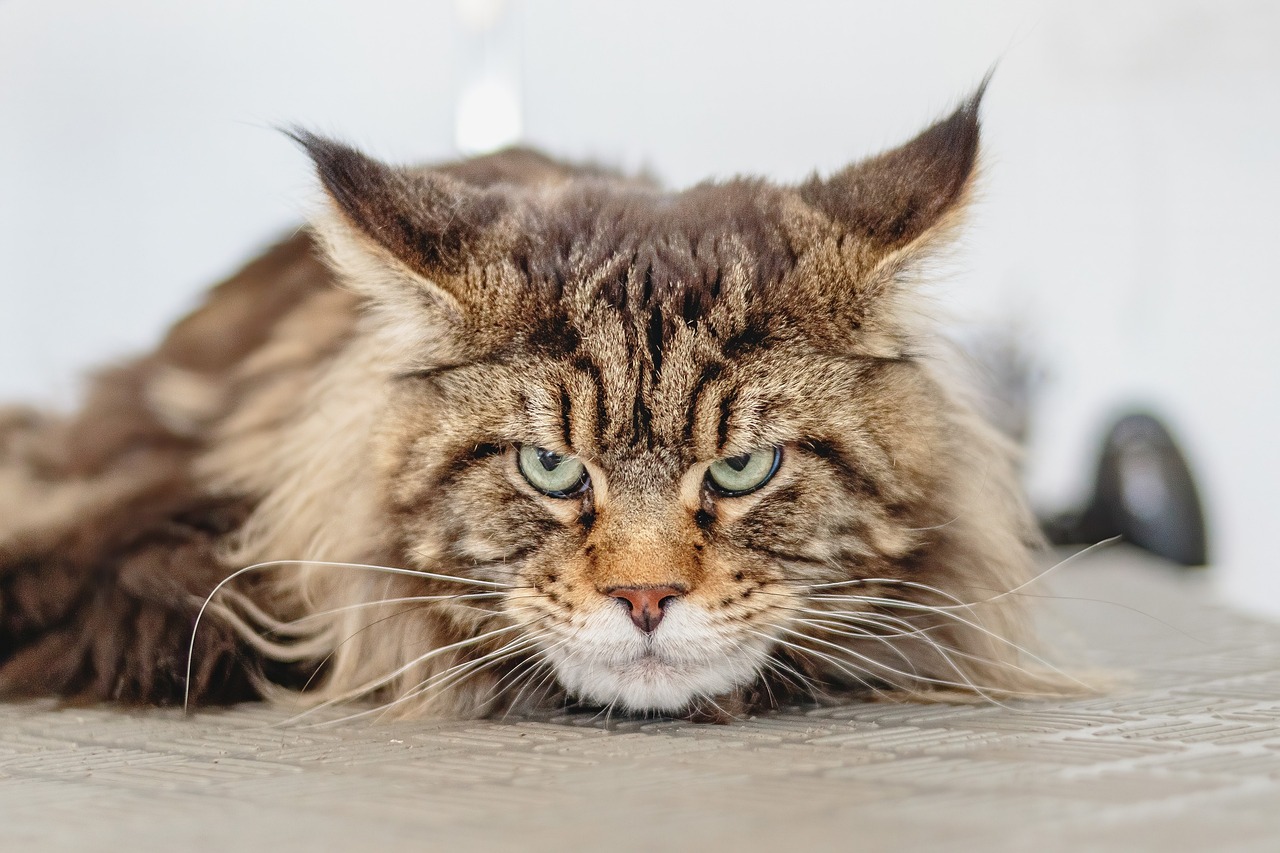
Physical Characteristics
Feature
Description
Coat Color
Rich chocolate brown, short and glossy
Body Size
Medium-sized, muscular build
Eyes
Vivid green or hazel, expressive and bright
Ears
Medium-sized, rounded tips, set wide apart
Tail
Medium length, tapering to a rounded tip
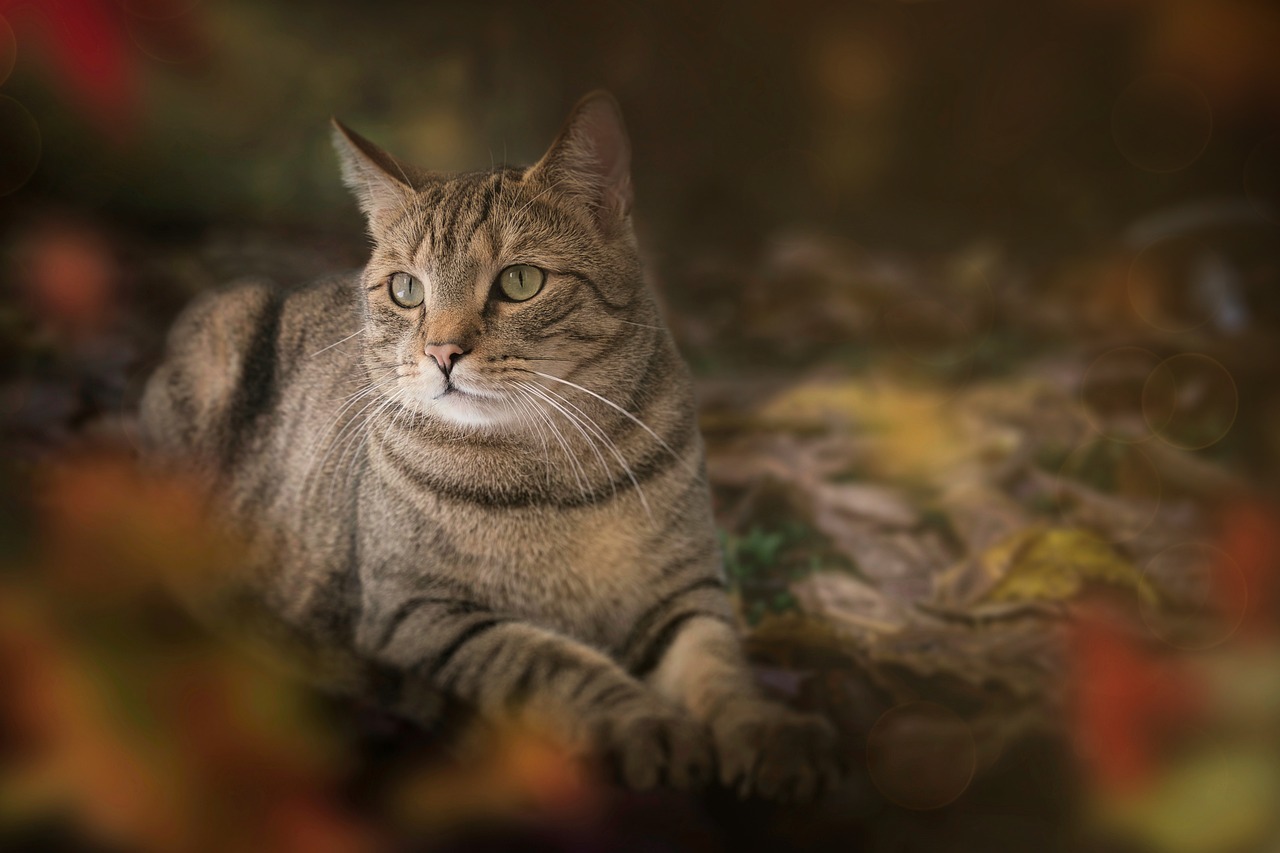
Temperament and Behavior
Yes! They are generally gentle and sociable, making them great companions for kids.
No, their short coat requires minimal grooming, but regular brushing is recommended to keep their coat healthy.
Havana Browns prefer companionship, so it's best to avoid leaving them alone for extended periods.
They are quite active and require regular playtime to keep them entertained and healthy.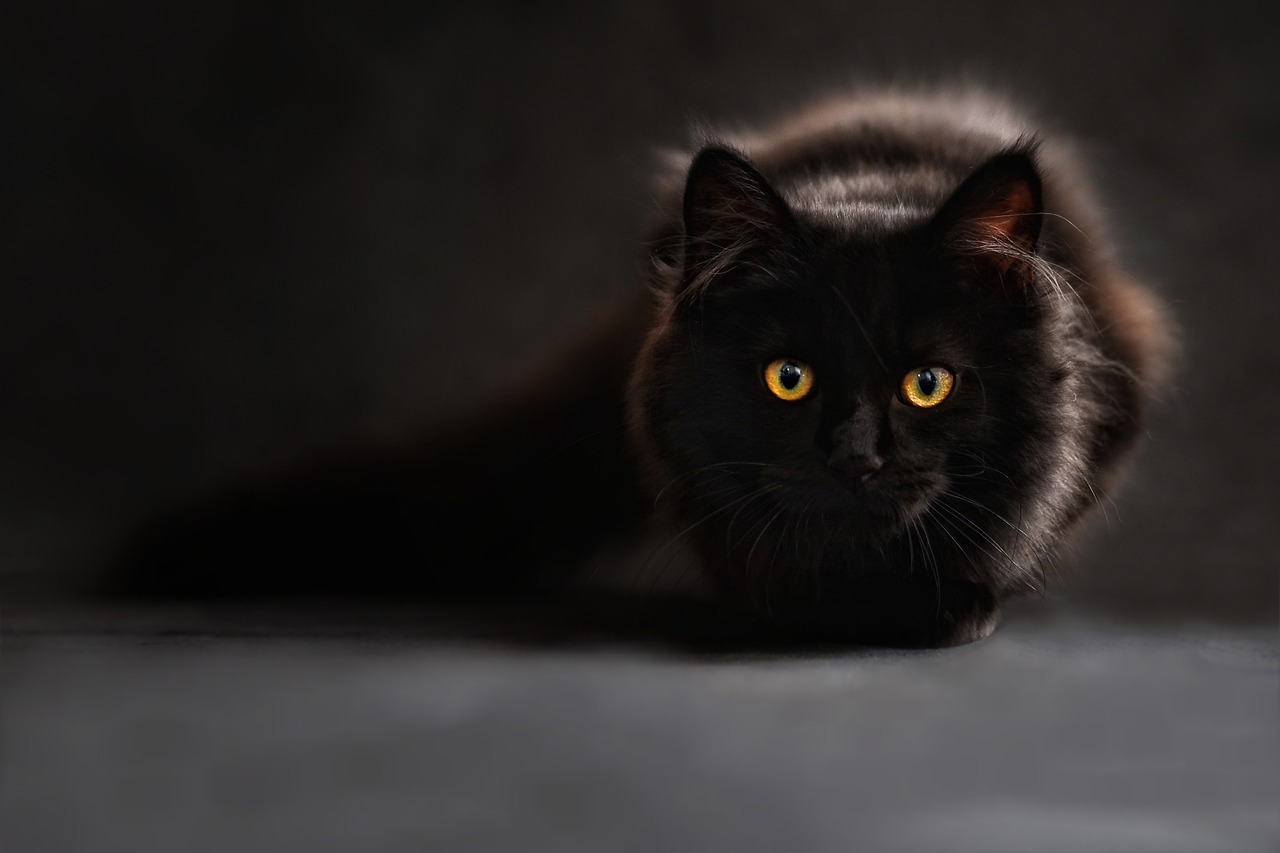
Health Considerations
Health Concern
Preventive Measures
Dental Issues
Regular dental check-ups, brushing, and dental treats.
Obesity
Balanced diet and regular playtime to encourage exercise.
Hypertrophic Cardiomyopathy (HCM)
Routine vet visits and monitoring for unusual behaviors.
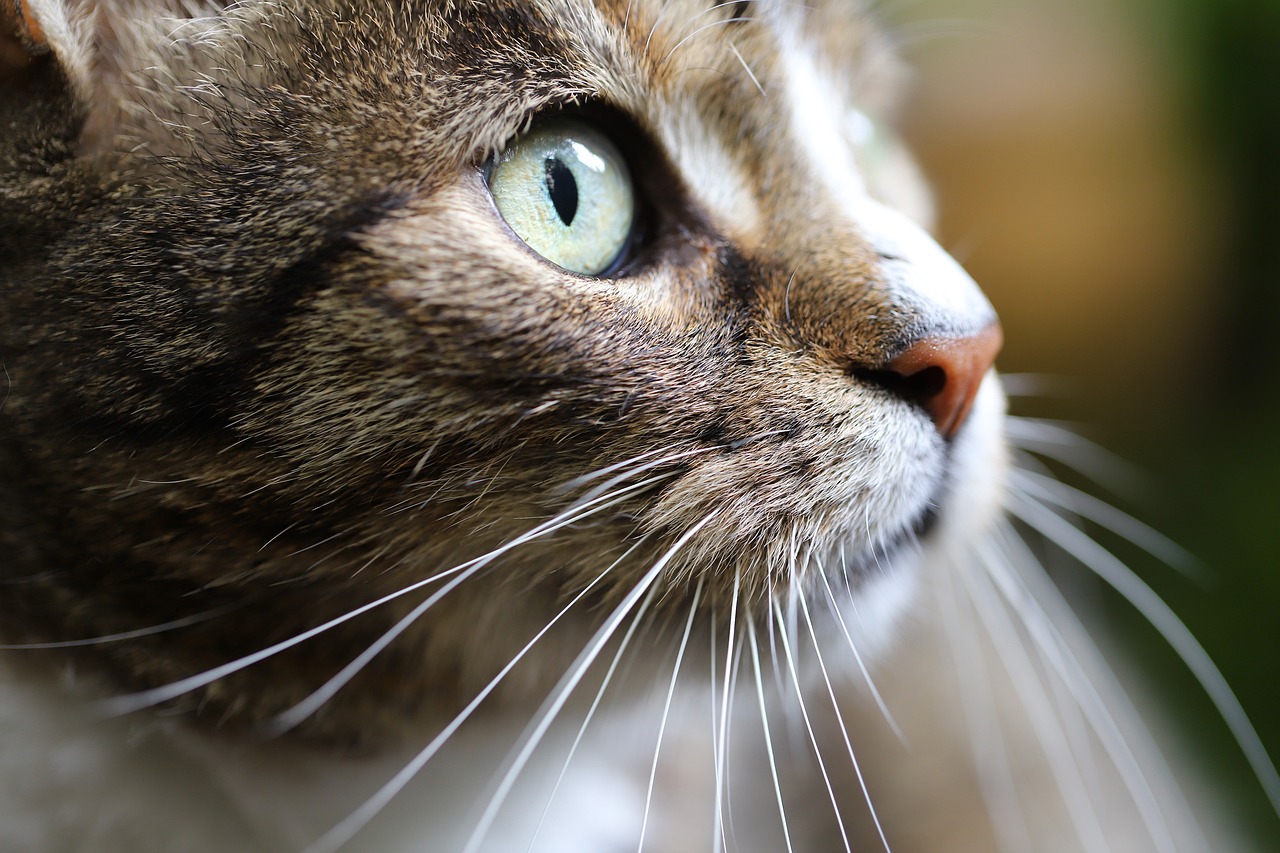
Grooming Needs
Ideally, you should brush them at least once a week to keep their coat healthy and shiny.
Bathing is usually unnecessary unless they get particularly dirty, but if needed, use a cat-specific shampoo.
Incorporate dental treats, toys, and regular brushing into their routine to prevent dental issues.
Gently wipe them with a damp cloth, but if you notice any redness or odor, consult your vet.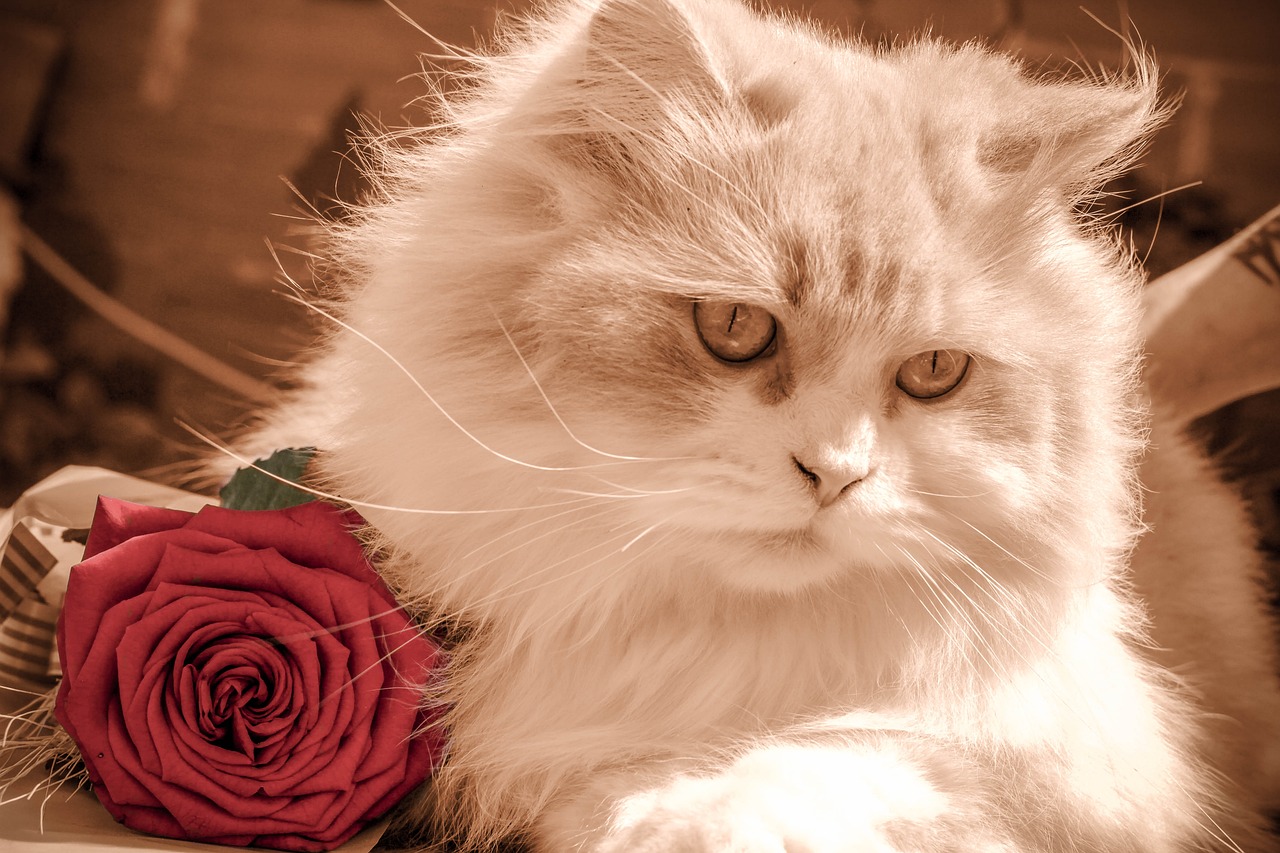
Diet and Nutrition
Diet Component
Importance
Protein
Supports muscle development and energy levels.
Healthy Fats
Provides energy and promotes healthy skin and coat.
Vitamins & Minerals
Essential for overall health and immune function.
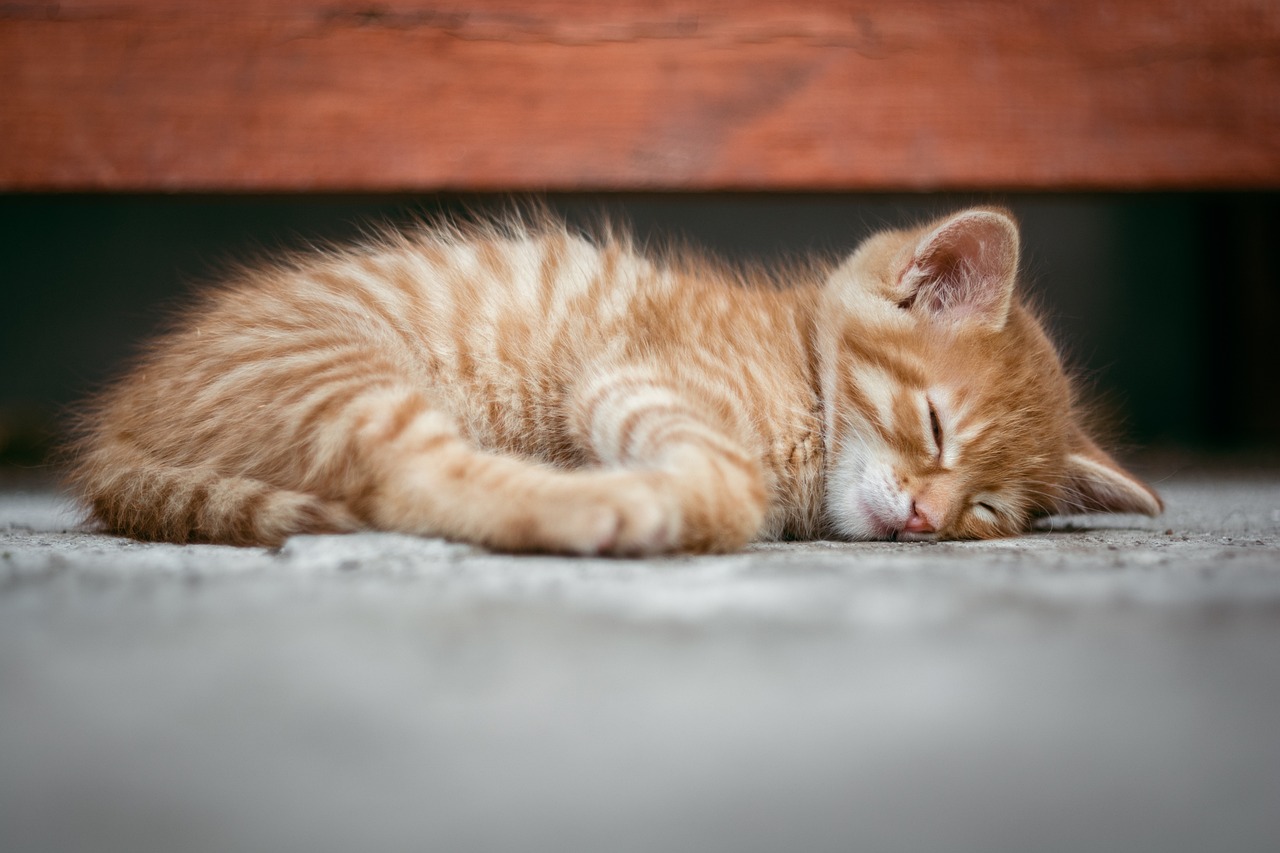
Training Tips
Training times can vary, but with consistency and patience, you can see progress in a few weeks. Remember to keep sessions short and fun!
You can start with simple commands like “sit” and “come,” and then move on to more complex tricks like “high five” or even agility exercises!
Absolutely! Socialization helps them become more adaptable and confident, making them better companions in various environments.
If your cat seems uninterested or distracted, try changing the environment, using different rewards, or shortening the training sessions.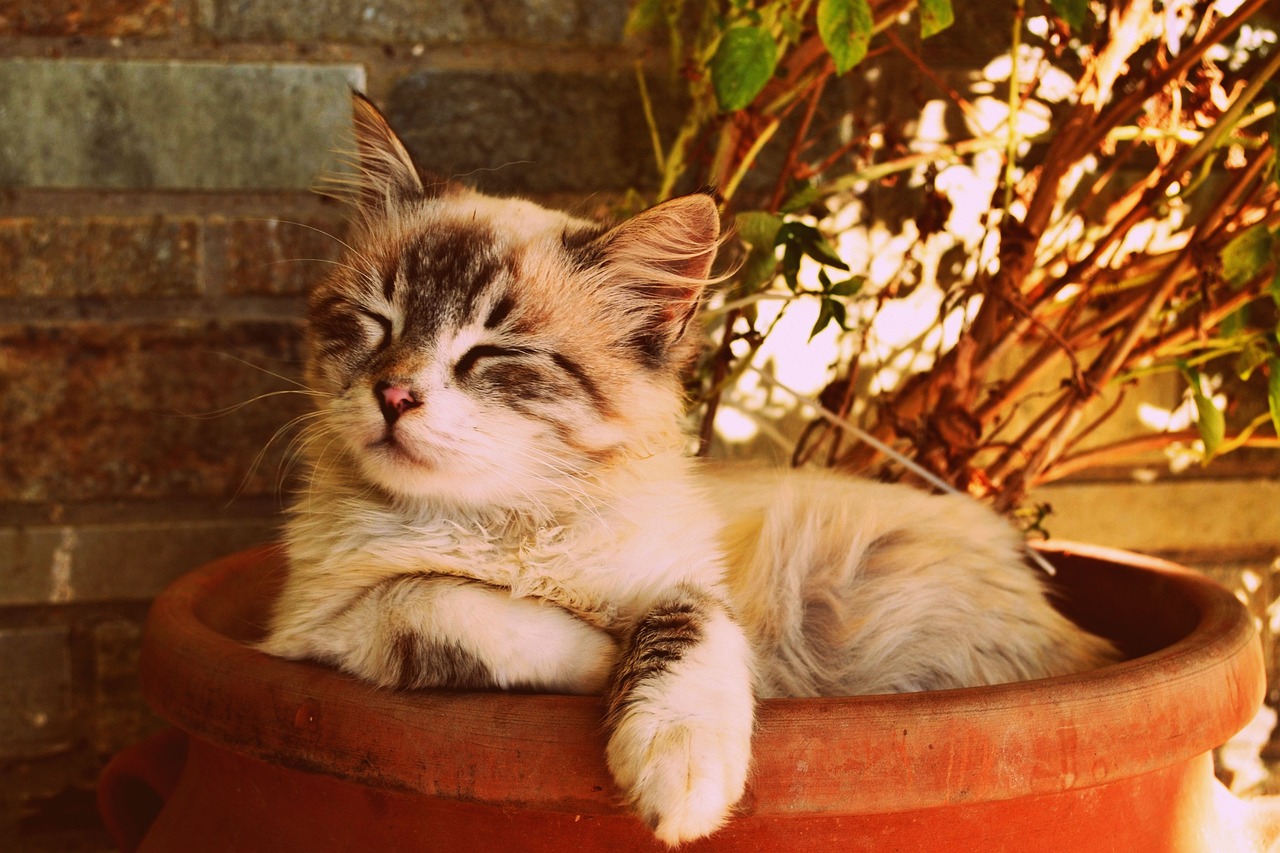
Living Environment
A: While they enjoy space to explore, they can adapt to smaller areas as long as they have vertical spaces and opportunities for play.
A: Regular play sessions with interactive toys, climbing structures, and engaging activities can keep them mentally and physically stimulated.
A: Yes, they are generally sociable and can get along well with other cats and even dogs if introduced properly.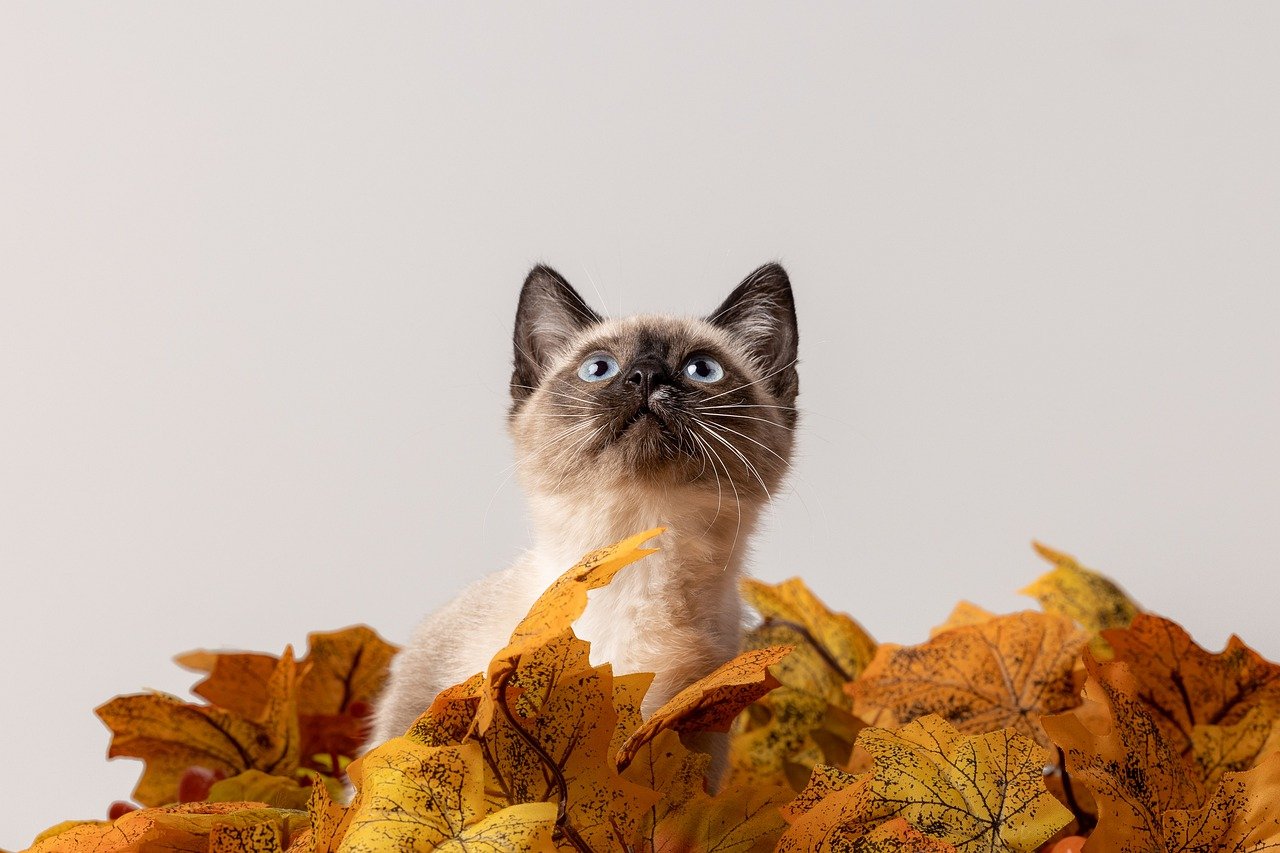
Adoption and Cost
Expense Category
Estimated Cost
Purchase Price
$1,000 - $2,500
Annual Veterinary Care
$100 - $300
Monthly Food Cost
$30 - $50
Grooming (every few months)
$50 - $100
Supplies (litter, toys, etc.)
$200 - $500 annually
Frequently Asked Questions







